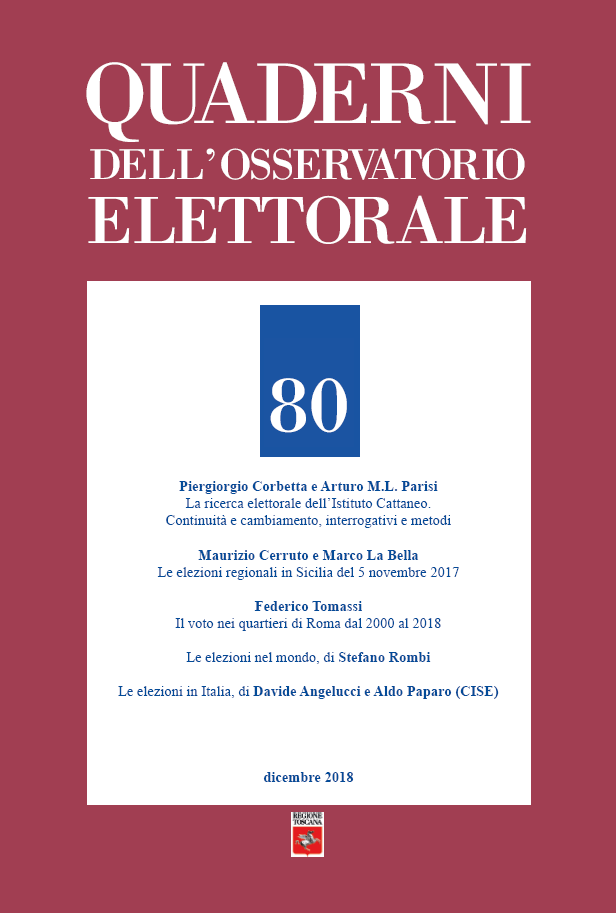Pubblicato 2018-12-30
Parole chiave
- Rome,
- elections,
- peripheries,
- neighbourhoods,
- inequalities
Come citare
Abstract
Social and economic inequalities between the city centre and peripheral belts persist for many years in Rome districts, in parallel to the on-going suburban sprawl. That yields political effects too, since electoral results from 2000 to 2018 highlight sharp political polarization: votes for left-wing (right-wing or Five Star Movement) candidates are inversely (directly) proportional to distance from Capitoline Hill. Notably, in 2018 general election, the left-wing coalition prevailed in central districts only, where education levels and personal income are very high, and (even if only slightly) in historical periphery, where it keeps consensus on progressive, inclusive and liberal policies. The opposite holds for the new populist Five Star Movement, that prevailed in low-density periphery inside the Orbital, in far-off sprawled districts and in Ostia coastal area. However, the right-wing coalition won in Rome as a whole, by more homogeneous and even inter-classist consensus, and prevailed outside the Orbital thanks to the League, that had for the very first time many votes in the Roman peripheries. As a matter of facts, both right-wing and populist policies seem easier to the extent that suburban citizens feel deprived since harmed by economic crisis, unsafe and worried about immigrants, far from elected bodies, scarcely endowed with public services.


